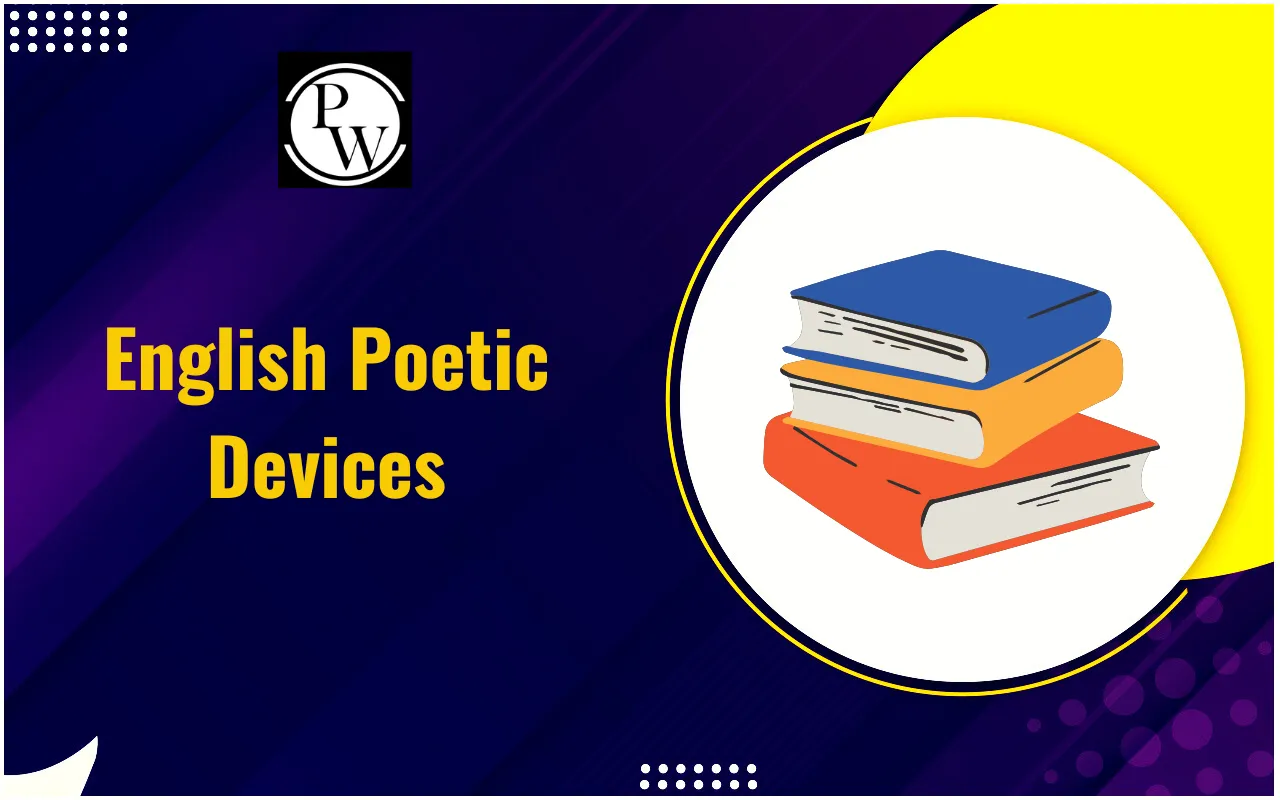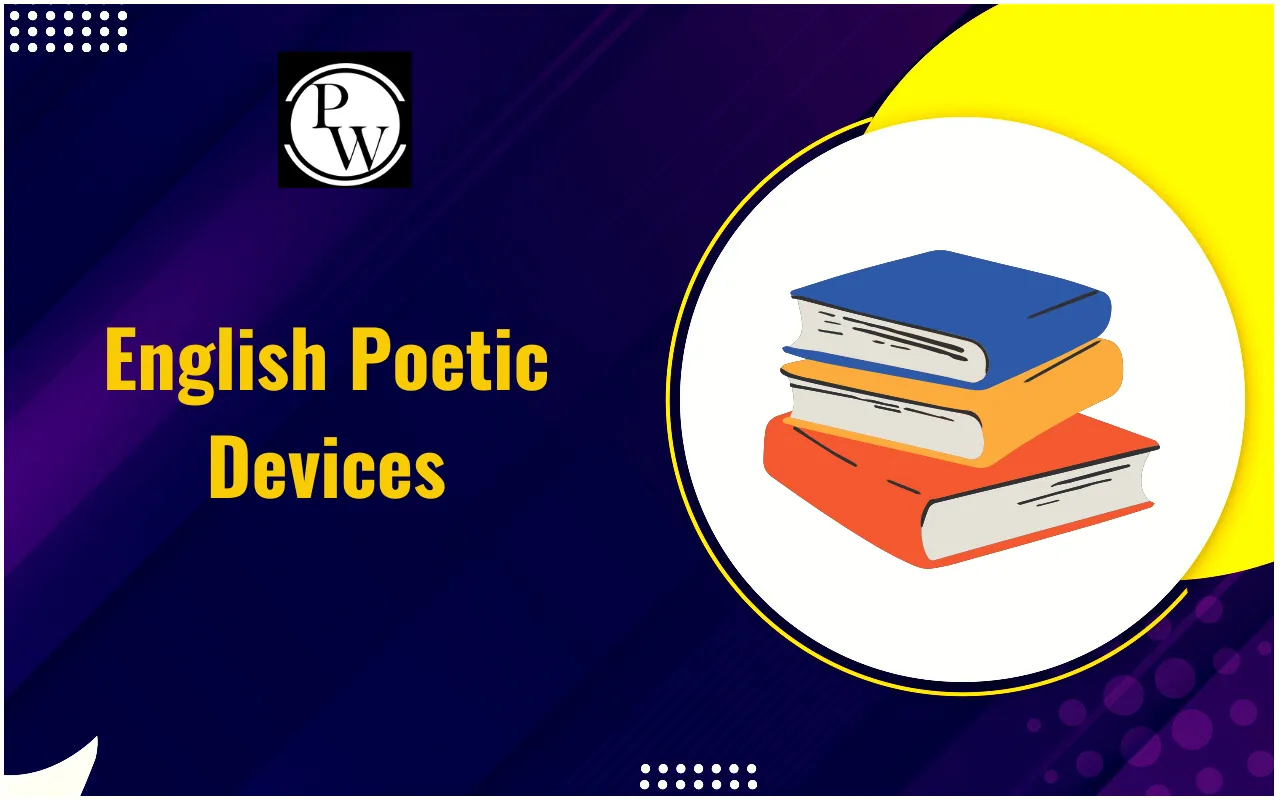

English poetic devices are characterized by their art of expression as well as not just the creative language, but also confront the art of the English poetry. The poetic devices are the devices of literature that enhance the meaning, give some emotions and formulate the ideas that could be memorable and creative images.
In the case of students who are about to take a competitive examination, learning of poetic devices may be rather required and this may be done in reading comprehension passages and types of literary analysis questions, not so different to writing prompts. This paper will be aimed at highlighting key English poetic devices: simile, metaphor and apostrophe. Type and differences of poetic devices will also be discussed after a definition and examples to give the reader a transparent and practical reference to study the examination.
English Poetic Devices
Poetic devices are methods that poets employ to produce effects in their texts and, in so doing, make the text more interesting and significant. These machines have figures of speech, sound patterns, and structural features which transcend the literal meaning of words.
| English Poetic Devices Overview | |||
| Poetic Device | Definition | Example | Purpose/Effect |
| Alliteration | Repetition of initial consonant sounds in neighbouring words | "Peter Piper picked a peck of pickled peppers" | Creates rhythm, musicality,and emphasis |
| Assonance | Repetition of similar vowel sounds within words | "Light bright night" | Adds internal rhyme, smooth flow |
| Metaphor | Direct comparison between two unlike things without using "like" or "as" | "Time is a thief" | Conveys deeper meaning, imagery |
| Simile | Comparison using "like" or "as" | "Busy as a bee" | Clarifies meaning with vivid imagery |
| Personification | Giving human traits to non-human things | "The wind whispered through the trees" | Creates emotional connection, imagery |
| Hyperbole | Exaggeration for emphasis or effect | "I've told you a million times" | Expresses strong feelings or humor |
| Onomatopoeia | Words that imitate natural sounds | "Buzz", "clang", "hiss" | Makes poetry vivid, sensory |
| Rhyme | Correspondence of sounds at the ends of lines | "Twinkle, twinkle, little star" | Enhances musicality, memorability |
| Imagery | Descriptive language that evokes sensory experience | "The scent of fresh pine filled the air" | Engages senses, creates vivid mental pictures |
| Irony | Expression where the intended meaning is opposite to the literal one | Saying "Great weather!" during a storm | Adds humor, surprise, or emphasis |
Poetic Devices in English Literature Detailed Examples
Poetic devices exist in English literature, not just in poetry, but also in prose, drama, and our everyday language. The importance of their use in poetry is particularly important because of the use of language briefness and imagery. This is why we have readily identifiable language such as simile and metaphor to represent context in meaning, in addition, for its value in literary traditions.
Appropriate use of poetic devices will differentiate poetry and ordinary writing. For example, simile and metaphor may express and convey complex emotions or ideas with only a few words. Sound devices such as alliteration and assonance serve to produce experienced and musical associations with language. Lastly, apostrophe conjures sensitivity to the poet's personal thoughts, or musings, and often heightens the drama of examining inner struggles and desires.
Simile
A simile is a figure of speech that presupposes a direct comparison between two different things that uses "like" or "as." The mechanism of direct comparison is employed to emphasize or clarify a detail and/or trait shared by both things compared. Similes are characterized as comparisons, transferring one characteristic from one idea (the vehicle) to another (the topic), making that description vivid to the reader.
Examples of simile as a poetic device:
-
"The city was like a painting"—The city (topic) is compared to a painting (vehicle) to emphasize the beauty (characteristic) of the city...
-
"Her smile was as bright as the sun"- The smile is compared to the sun to highlight its brightness.
-
"He fought like a lion"- The individual is compared to a lion to emphasize bravery.
Metaphor
A metaphor is a figure of speech which implies a comparison between two unlike things without "like" or "as." In a metaphor, it "is" claimed (stated as fact) that one thing is another, which transfers characteristics from one domain to another to point out similarities. Metaphors are pervasive in both everyday speech and literature, enabling writers to present abstract or complex concepts in a tangible way .
Metaphor Poetic Device with Examples:
-
“The world is a stage”—Here, the world (tenor) is directly equated to a stage (vehicle), suggesting that life is like a performance.
-
“Time is a thief”—Time is described as a thief, emphasizing its ability to take away moments or opportunities.
-
“His mind was a fortress”—The mind is likened to a fortress, implying strength or resistance.
Apostrophe
Apostrophe is a poetic device where the speaker addresses someone absent, an abstract idea, or an inanimate object as if it were present and capable of responding. An apostrophe is used to convey intense emotion, summon inspiration, or dramatize a poem’s themes.
Apostrophe Poetic Device in Poetry:
-
“O Death, where is thy sting?”—Death is addressed directly as if it were a person.
-
“Twinkle, twinkle, little star, how I wonder what you are!”—The speaker addresses the star, which cannot respond.
-
“O Muse, inspire my song”—Here, the poet implores the Muse for inspiration.
Difference Between Simile and Metaphor
Although both simile and metaphor are comparisons involving a similarity, they do it in two completely different ways. Simile involves explicit and definite comparative words, such as like, as, etc., to clarify when comparing two distinct things. An example is in the statement He was as brave as a lion which draws a clear and obvious comparison.
Nonetheless, a metaphor refers to one thing as another without the words like or as and, in such a case, it is usually left to the readers to make the inference. As an example, He is a lion in battle would mean that the man is a brave person by identifying him with a lion without saying directly that he is brave.
Occasionally, similes are termed as direct metaphors and the only difference between similes and metaphors is the literalness of the comparison. Similes are syntactically and implicitly marked with comparators whereas metaphors are based on less obvious conceptual mappings and may need deeper analyses to find out which is the similar and shared ground.
Significance Of Poetic Devices
Poetic devices also have multiple purposes:
-
They are facilitating the creation of vivid mental images, abstract concepts, and highlighting emotions or themes.
-
They allow making comparisons that can render the descriptions more emphatic and memorable.
-
Simile and metaphor is the centre of human imagination and communication, which gives new insights and inspiration to the reader.
-
Another device that poets use, apostrophe, enables them to write to things that are absent or inanimate to increase the level of emotion in a poem.
-
The level of proficiency in these devices is not only helpful in the examination, but it also enhances understanding of the English literature.
Practice and Study for the Competitive Exam
In competitive exams, the questions may involve identification, interpretation or analysis of poetic devices in unseen texts. The structure and functioning of similes, metaphors, and apostrophes can be understood, and through this understanding, students can answer such questions accurately.
e.g. the students can be requested to:
-
Identify the figurative element of a line of poetry.
-
Discuss how a simile or metaphor adds the meaning to a sentence or piece of poetry.
-
Discuss the emotional impression of a poem that has an apostrophe.
